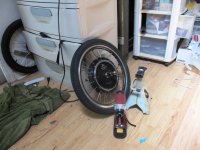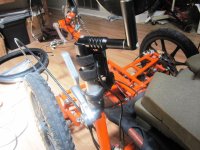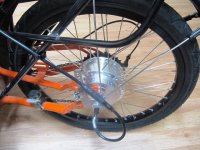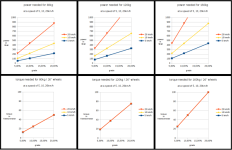docnjoj
1 GW


 Here are some pictures of the Xiongda 2 speed on my trike after the first road test. The trusty 9C is also shown. the shifter makes the handlebars a bit crowded, but manageable. Now if I can only get the automatic shift to work............ Thi trike seems to have good power up a 5% hill in low gear as long as I use the shift button. In auto mode it hunts and pecks, even on a hill. There are four different controls on that one handlebar, so it gets kind of busy. I had to change my 7 speed rear gears for a 5 speed. Should be fine as the highest gears are rarely used at the speeds we travel.
Here are some pictures of the Xiongda 2 speed on my trike after the first road test. The trusty 9C is also shown. the shifter makes the handlebars a bit crowded, but manageable. Now if I can only get the automatic shift to work............ Thi trike seems to have good power up a 5% hill in low gear as long as I use the shift button. In auto mode it hunts and pecks, even on a hill. There are four different controls on that one handlebar, so it gets kind of busy. I had to change my 7 speed rear gears for a 5 speed. Should be fine as the highest gears are rarely used at the speeds we travel.otherDoc




